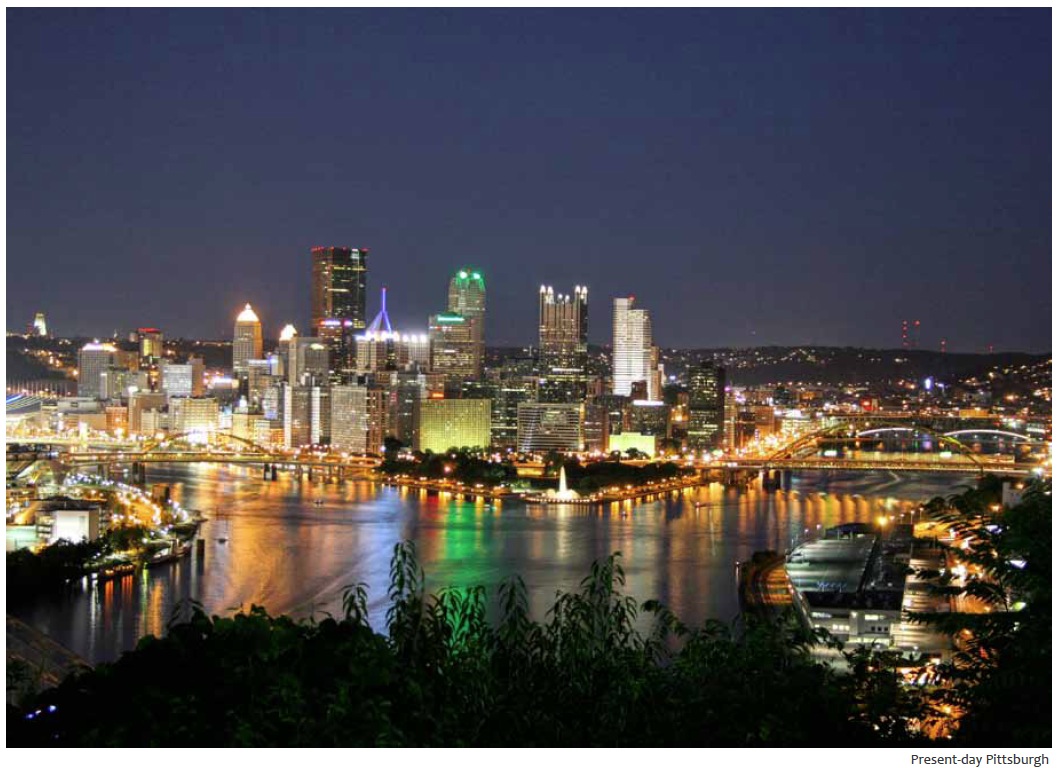REMAKING CITIES INSTITUTE
Background
The City of Pittsburgh intends to replace its entire inventory of 40,000 street lights with light-emitting diode (LED) fixtures over the next five to ten years. When fully implemented the project is expected to save annually an estimated $1.7 million (70% savings) in energy and maintenance costs. In addition the conversion will reduce carbon dioxide emissions by almost 7 million metric tons annually.
Street lighting in the United States evolved from oil and gas lamps in the 17th and 18th centuries to electric lamps in the late 19th century. Electric lamps have since progressed from incandescent to fluorescent to mercury vapor (MV). Today high intensity discharge (HID) lamps dominate street lighting installations. Two HID lamp types predominate: high pressure sodium (HPS), noted for its yellow/orange light, and metal halide (MH) that emits a bright, white light. Recently the trend has been to convert to LED fixtures because of documented savings on energy use and life-cycle maintenance costs.
In December 2010 the City engaged the Remaking Cities Institute (RCI) of Carnegie Mellon University (CMU) to undertake a proof of concept research project to investigate best practices of LED conversion as well as to study other aspects of LED street lights, such as spacing, color, intensity, glare, aesthetics, impact on “dark sky,” controls, energy monitoring, public safety, placemaking, special events, and impacts on drivers, bicyclists, pedestrians, and the elderly and sight-disabled. The RCI study focused on the conversion of 3,100 street lights in the thirty business districts of the City. Three prototypical business districts (from large to mid- sized to small) were selected for detailed study: Fifth and Forbes in Downtown; East Carson Street on the South Side; and California Avenue in Brighton Heights. Four existing City fixture types were studied for conversion to LED: cobra head; shoebox; acorn; and pendant. Globe fixtures, a fifth type, have been and are being phased out of the City inventory.
The research team was led by the RCI and included C & C Lighting, LLC (Pittsburgh), and Orfield Laboratories, Inc. (Minneapolis).
The project proceeded in three phases: data collection; research; and recommendations.
Download Full Report (PDF): LED Street Light Research Project
About Remaking Cities Institute
www.cmu.edu/rci/
“The Remaking Cities Institute (RCI) is an urban design research center in the School of Architecture that was created to promote an improved quality of life through place-making and carefully planned economic and community redevelopment. The ability to capture and evaluate the conditions of neighborhoods and regions as well as their ability to deliver the basic tenets of a shared quality of life, and to envision futures that regenerate neighborhoods and regions, is a primary goal of the RCI.”
Tags: Carnegie Mellon, Pennsylvania, Pittsburgh, Remaking Cities Institute







 RSS Feed
RSS Feed